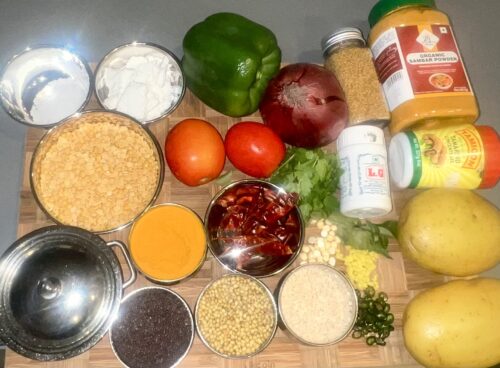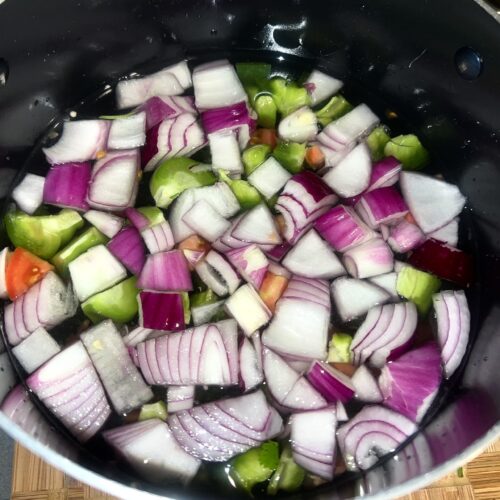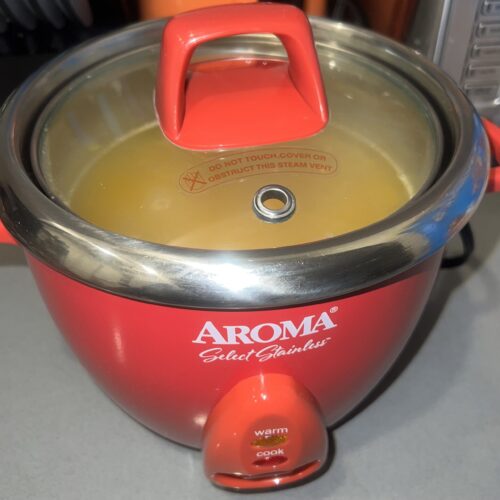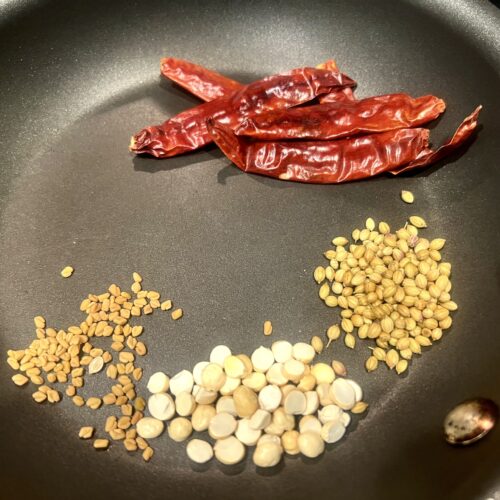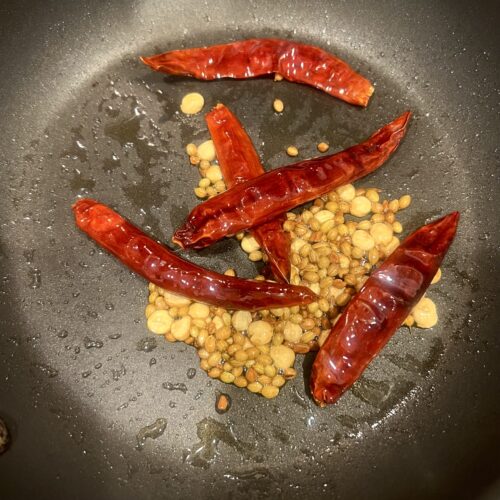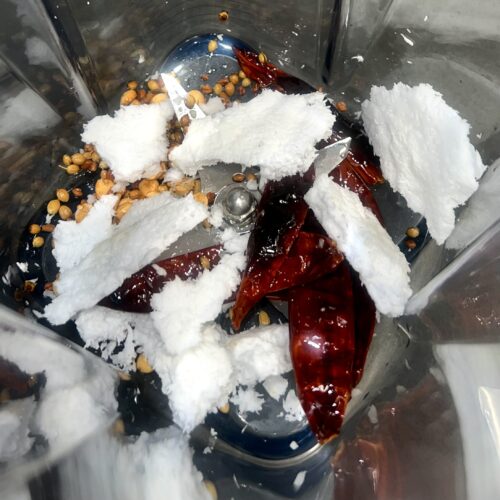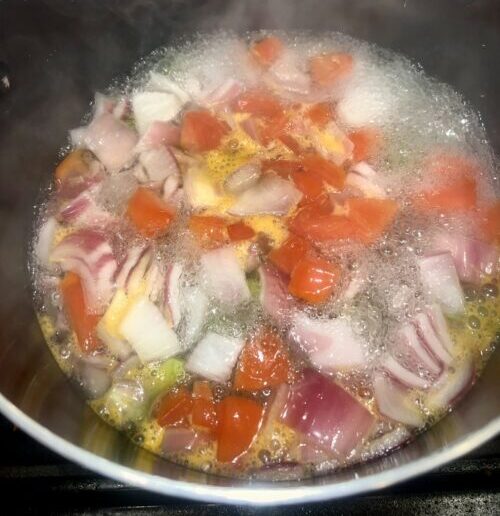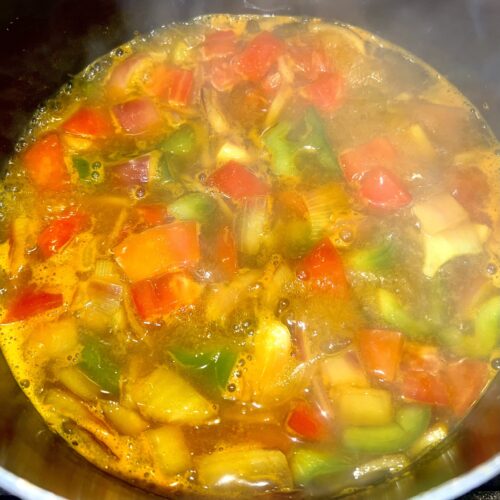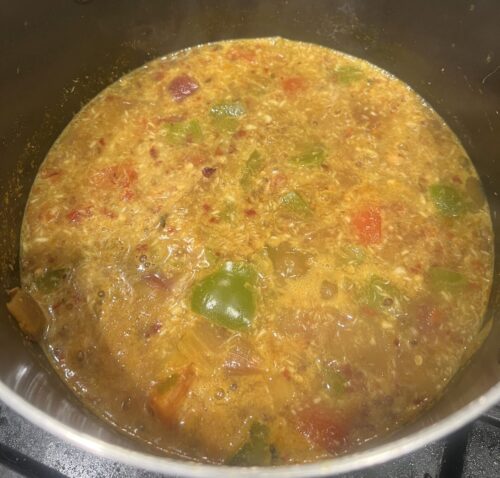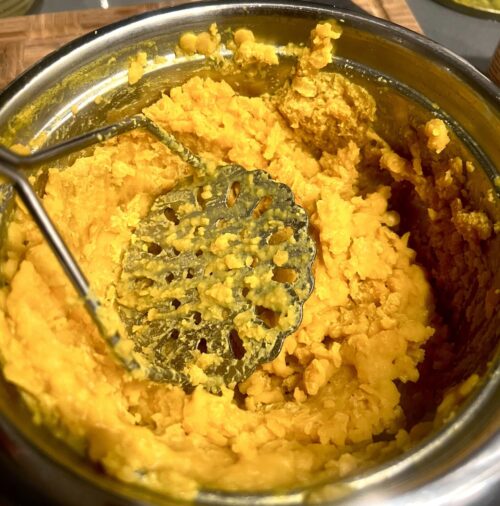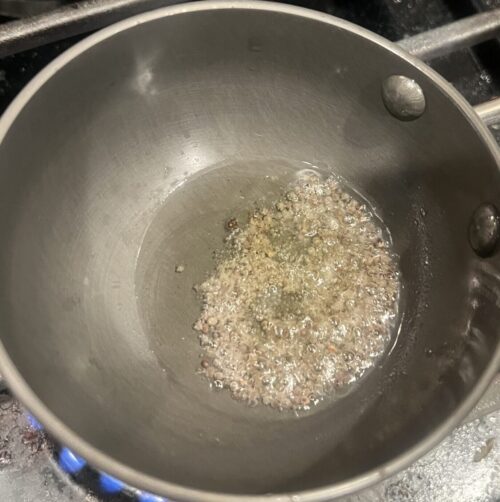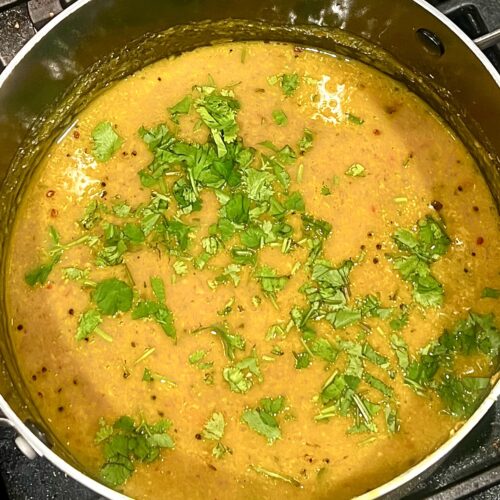Sambar (Saam-baar) has played a prime role in my upbringing, coming from a traditional Tamil family. It is the most widely used, dish that is used all across the world today. I am so excited to share this household go-to with everyone! Its versatile function and flavorful palette, Sambar continues to impress and comfort millions everyday. Let’s take a deeper dive in to the what, where, and how of Sambar!
The Origins of Sambar
While most know the sambar we see today, from Tamil Nadu, India, the origins actually span back to the Maharashtrian regions of India. During Maharashtrian rule in Thanjavur, Tamil Nadu, India, it is by legend that the eldest son of the royal family, Sambhaji, visited Thanjavur and was served Sambar made by Shahaji I or a Royal Chef.
Today, Sambar has various regional twists and is used in a multitude of ways. It has become an absolute staple in Indian cooking and one that has connected all Indian souls to their childhood nostalgia.
About the Ingredients
The ingredients in Sambar are quite nutritious. Made up of mostly lentils and vegetables, Sambar has been known to be a great source of protein, fiber, and vitamins. The nice thing with samber is that you can make it with really any vegetables. You can make it in a simple version, or in the more complex version that we will be exploring today.
Starting with the dry ingredients, we have Gram Dal, Dried Red Chillies, Fenugreek, Coriander Seeds, and Toor Dal. These elements are quite consistent throughout various South and North Indian dishes so chances are, you either have them on hand already, or, you will be adding them to your spice collection for your future Indian cooking experiences.
Now we delve into the stew itself. To put it simply, sambar is just a bunch of vegetables in water, cooked with various seasonings, and everything else is supplemental/optional. We start by grinding up the blender ingredients and getting the Toor Dal started in the cooker. I used a regular 1-cup cooker by the Aroma brand – this is quite old so feel free to use any cooker/pot that you have already. From there, it’s all about mixing it all together! Join me below to walk through the detailed process and thank you for reading along!
How to Enjoy Sambar
Sambar can be had in a million ways. Traditionally, folks will enjoy this entrée with Idli, Dosa, Vada, or Rice.
Here is the dream formula: Carb Source + Sambar + Curry/Fry + Chutney = Breathtaking Happiness.
The versatility of flavor combinations between these are endless – sambar with idli, potato fry, and coconut chutney; sambar with dosa, okra fry, and onion chutney; there are endless possibilities! These four elements intertwined is a killer combo and serve for a balanced, flavor-powered punch – leaving you in awe after each bite.
Disclaimers
- This recipe contains coconuts! Please be aware of any and all allergens.
- This recipe is mild compared to the original – feel free to adjust the chili ratio according to your needs.
References
“Other Tales of Sambar’s Invention.” The Times of India, The Times of India, 23 May 2023, timesofindia.indiatimes.com/life-style/food-news/the-story-of-how-popular-south-indian-sambar-was-invented-recipe-inside/photostory/100445358.cms?picid=100445377.

The Best Traditional Sambar Guaranteed to Make You Feel At Home
Ingredients List
Dal Ingredients
Blender Ingredients
Stew Ingredients
Instructions
-
Ingredients Overview/Preparation
I find it helpful to have everything laid out in front of me before cooking. Here is an overview of all the ingredients I will be using. Prep your vegetables and spices.
-
Adding the Vegetables to a Pot
Add your cut up vegetables into a large pot.
-
Adding Water to the Mix!
Fill your pot with water that covers your veggies. Your onions will float so feel free to push down on them a bit to ensure you aren't overpouring the water.
-
Cooking the Dal
Add the toor dal to a cooker with 2 cups of water and a small pinch of tumeric for color (the turmeric is optional). I like to use cooking spray at the bottom of my cooker to ensure none of it sticks to the bottom but this is optional as well. Set aside to cook.
**The ratio of lentil to water is 1:2 - this means 1 unit of lentil to 2 units of water.** -
Let's Toast the Dry Spices.
Add your dried red chilies, fenugreek seeds, gram dal, and coriander seeds to a small pan along with about 1 teaspoon of oil (the oil can be optional).
-
Mix Mix Mix!
Sauté the dry spices until your lentils turn a golder brown color. Mine took about 3-4 minutes to reach this color.
-
Toss It in the Blender!
Add the spices you just sautéed into the blender along with the shredded coconut and a bit of water and blend until you reach a paste like consistency.
-
Boil the Veggies.
Place your pot of veggies and water onto the steve and bring it to a boil on medium heat.
-
Give It Some Spice.
Add turmeric, sambar powder, salt, and tamarind concentrate and leave it boiling until your potatoes are easily pierced by a fork.
-
Add the Blended Paste.
Once your vegetables are cooked, bring the heat down to a medium-low heat setting and add in your blended paste. Give this a good stir.
-
Mash Mash Mash!
By now, your toor dal should be done. Use a manual potato masher or a blender to mash the dal into a smooth-ish consistency. A small amount of lumps is fine but your want it to be smooth for the most part. You can add a bit of water as you mash to reach that smooth paste-like consistency but I like to use the sambar water to bring in more flavor. Once fully mashed, add it to the pot of simmering sambar, and let is cook for another few minutes.
-
Tadka
Add mustard seeds and oil to a pan. Once the mustard seeds start popping, add in the urad dal and asafoetida. When the urad dal turns folder brown, remove from the head and add it to the sambar.
-
12. Final Product!
Here is my final version! Serve warm and enjoy!!
Nutrition Facts
Servings 10
- Amount Per Serving
- Calories 145kcal
- % Daily Value *
- Total Fat 3.9g6%
- Saturated Fat 2.1g11%
- Sodium 498.1mg21%
- Potassium 430mg13%
- Total Carbohydrate 22.3g8%
- Dietary Fiber 4.4g18%
- Sugars 2.3g
- Protein 6g12%
* Percent Daily Values are based on a 2,000 calorie diet. Your daily value may be higher or lower depending on your calorie needs.
Note
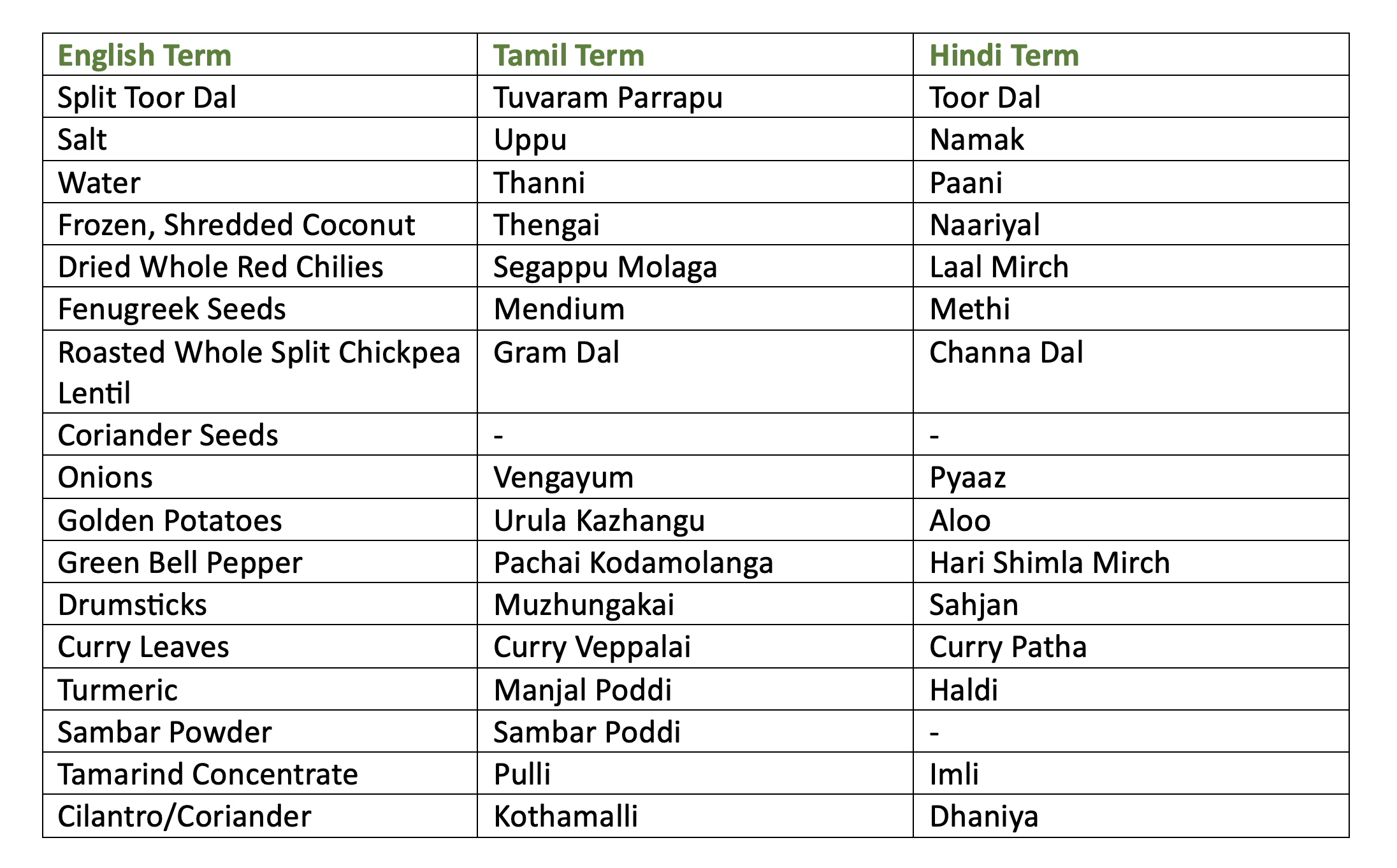
This chart is a simple keyword translation. Some words may not be filled as I either don't know them or was unable to find them on the internet. In this instance, feel free to provide feedback and I would be happy to update it!


